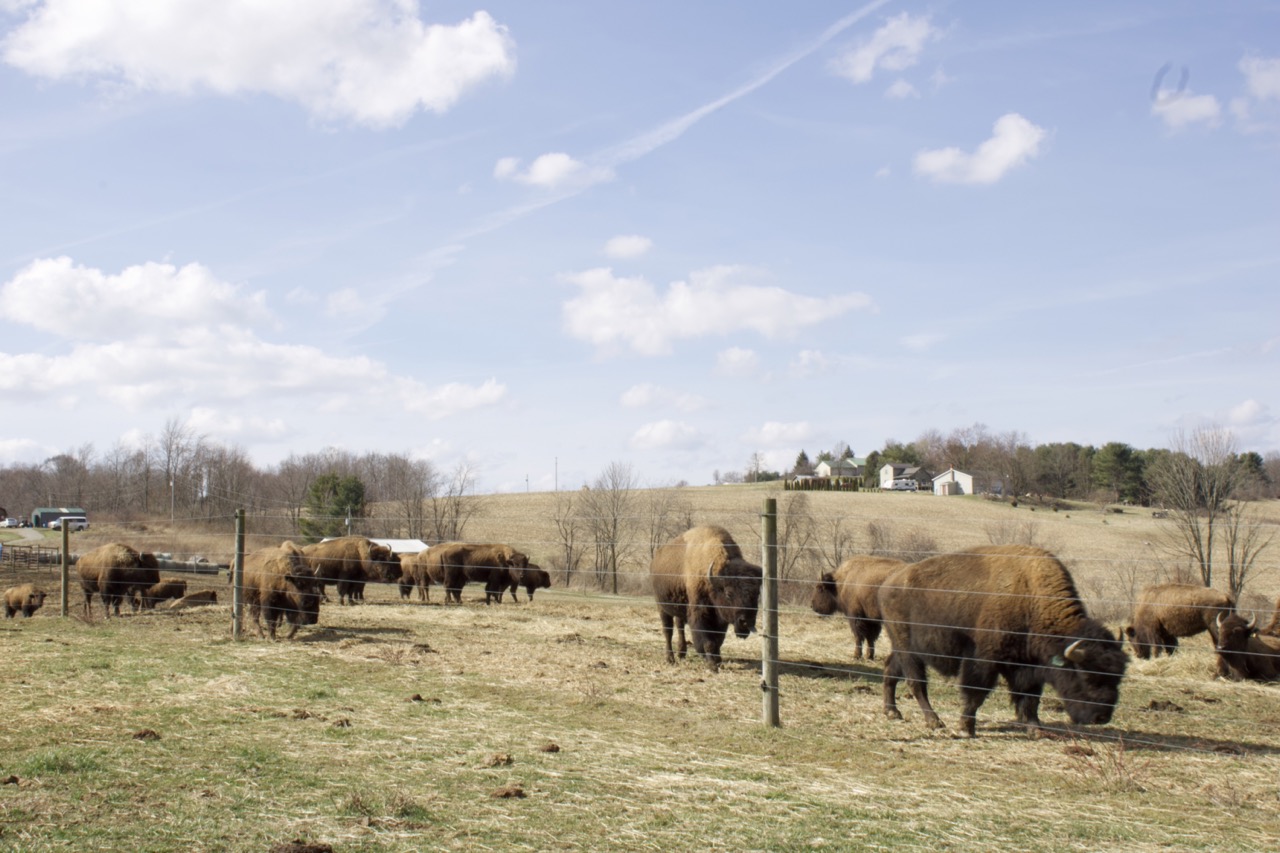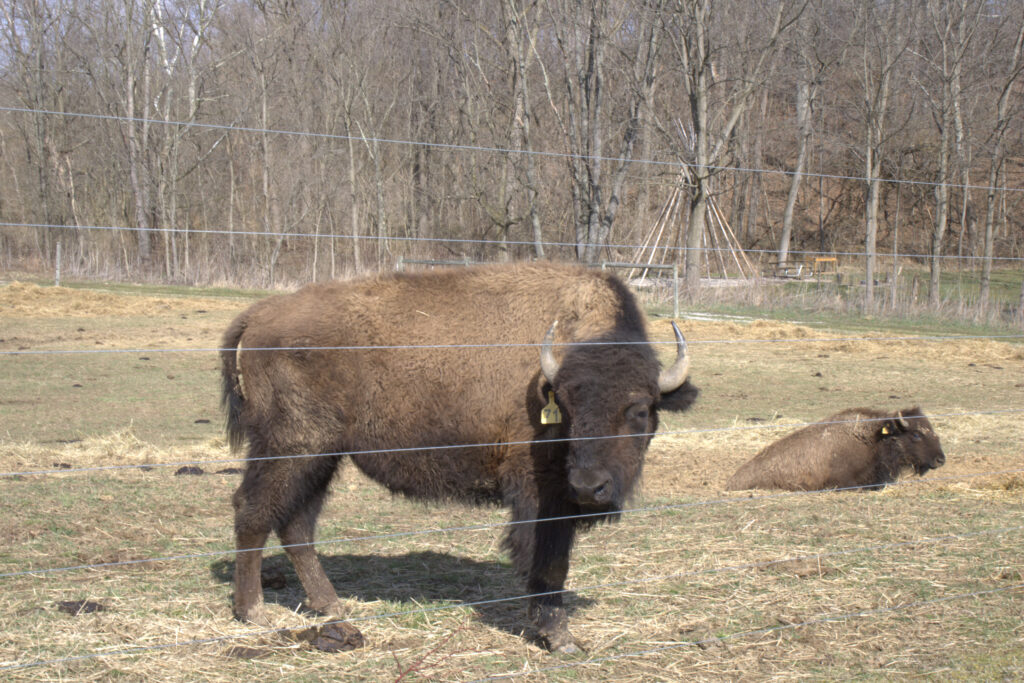
Written by Alex Ifft, Photos by Zach Vogeler
From the brink of extinction to a remarkable resurgence, the history of bison is a testament to time. Bison faced annihilation in the early 19th century. However, thanks to the dedication of conservationists as well as help from farmers and ranchers, their numbers have rebounded.

As years have gone by, many conservation groups such as the National Bison Association, American Bison Society, Wildlife Conservation Society, and more.
“All these groups have, in one fashion or another, worked together over the years to ultimately restore the species to what it is today,” (5:48) Jim Matheson Executive Director of the Natural Bison Association (NBA), says.
Carie Starr, native to Southeast Ohio, found herself deeply engaged with the NBA, drawn by her passion for bison and her commitment to their well-being.
In 2005, a meal at Ted’s Montana Grill sparked a dream that would change Carie Starr’s life. Living on 50 acres that once belonged to her grandparents’ 160-acre farm, Starr found herself enamored with the taste of bison.

“I tried Bison for the first time at Ted Montana’s Grill and it was love at first bite,” (0:19) Starr says.
Little did she know the experience would lead to the opening of Cherokee Valley Bison Ranch.
At the time, raising, breeding, and harvesting bison seemed like an impossible task for Starr. Bison are known to be expensive, and as a single mom without a barn or proper fencing for the animals, Starr’s idea seemed improbable. However, once she met her husband, Jarrod, she shared her dream with him, and together they decided to take on the challenge.
“Love makes you do crazy things so here we are,” (1:47) says Starr.
Their dream took an unexpected turn when they stumbled upon an ad in the Columbus Dispatch selling a herd of 14 bison. The Starrs wound up buying the entire herd. However, they ran into a problem: they didn’t have fencing for the herd. Rather than walk away, they struck a deal with the seller, and promised to build a fence before the bison got sent to be turned into meat. The Starrs raced against time, finishing the fencing in six weeks to bring the bison home for good.
As the herd grew, so did Starr’s knowledge of bison. Networking became a valuable tool and had since led to her appointment as president of the Eastern Bison Association and a regional director for the NBA. The bison industry is a community that is willing to help one another, which is one of the big reasons that Starr is so involved today.
On Starr’s 50-acre pasture you can find more than just the bison roaming the fields. Cherokee Valley Bison Ranch has become very successful for other things such as agritourism and marketing. Starr sells a variety of bison products including patties, ground, brats, sausage, and more.

To cater to the demand for her bison meat, Starr strategically targets areas that she believes will appreciate the meat. One of those is Kindred Market, a store in Athens, Ohio. Kindred Market is one of the few stores that carries Cherokee Valley Bison Ranch products in Southeast Ohio.
The farm’s name, Cherokee Valley Bison Ranch, pays homage to Starr’s Native American grandmother Barbara Crandell. Starr’s grandmother originally owned the land and she was part Native American. Her grandmother’s heritage influenced Starr to name the ranch in her honor.

Back when Starr’s grandparents owned the land, they used it for harness racing. Harness racing is a form of horse racing where a horse pulls a two wheeled carted called a sulky.
“They used to go down to Florida in the wintertime and race at Pompano Park,” (3:55) Starr says.
For Barbara and her husband, Frank Crandell, this wasn’t just a sport for them. This is how they made money and kept the 160-acre farm running. Starr’s grandparents would use their land to train these horses and then enter them into competitions across the country. In return this is how they would make their living and be able to keep their land.
The journey of the bison from near extinction to thriving populations is a testament to the power of collective action and dedication to conservation. Through the efforts of organizations like the Natural Bison Association and the commitment of individuals like Carie Starr, the resurgence of these animals symbolizes the hope for our future. From the brink of annihilation to flourishing populations, the story of the bison serves as a reminder of the importance of preserving and protecting our environment for future generations.